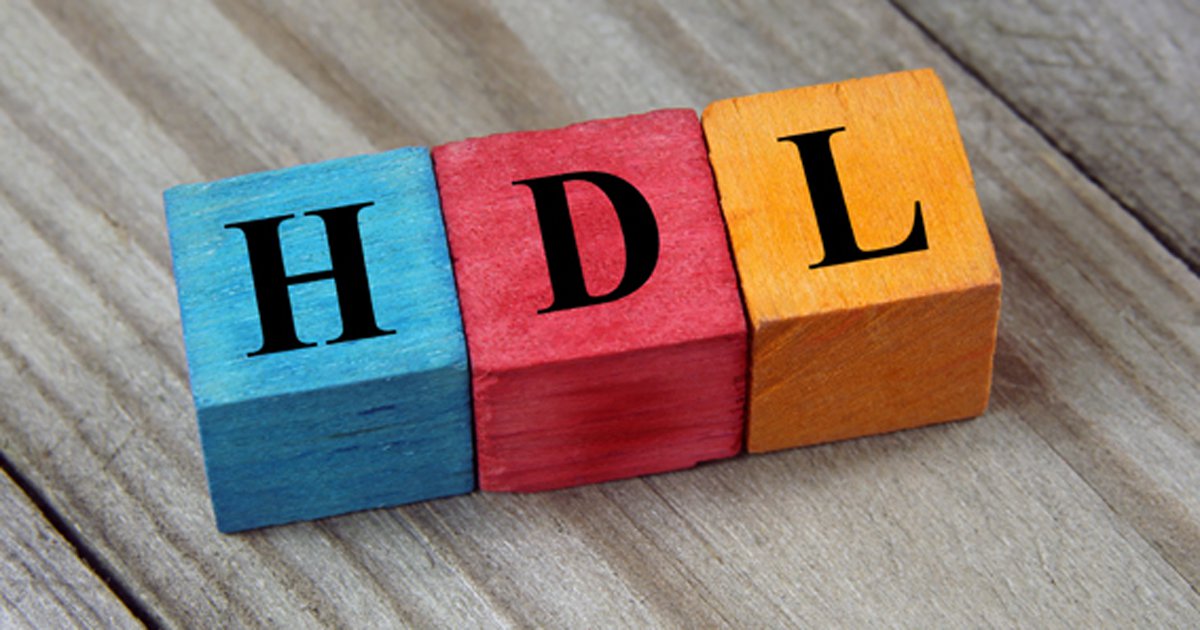Low HDL cholesterol ‘stable marker’ of high triglycerides

Low HDL cholesterol levels can be used to monitor long-term, average high triglyceride levels and remnant cholesterol in much the same way a high HbA1c is an indicator of long-term, average high glucose levels, according to findings published in The Journal of Clinical Endocrinology & Metabolism.
“For most individuals, low HDL cholesterol is a stable marker that the person, on average, has elevated levels of atherogenic triglyceride-rich remnant lipoproteins,” Børge G. Nordestgaard, MD, DMSc, chief physician in the department of clinical biochemistry at Herlev and Gentofte Hospital, Copenhagen University Hospital, told Healio. “When doctors observe low HDL cholesterol in a patient, they should focus the attention on elevated triglyceride-rich lipoproteins identified, such as elevated triglycerides, remnant cholesterol, non-HDL cholesterol or elevated apolipoprotein B despite low LDL cholesterol. If triglyceride-rich lipoproteins are elevated despite statin therapy, other triglyceride-lowering measures should be considered.”
In a cross-sectional study, Nordestgaard and colleagues analyzed data from 108,731 adults with information on nonfasting triglycerides and HDL cholesterol concentrations as part of the Copenhagen General Population Study initiated in 2003, including 10,479 participants who attended the 2014 follow-up exam. Researchers also assessed a cohort of 1,313 adults who provided lipid measurements at 10 repeated visits at Herlev Gentofte Hospital, Copenhagen University Hospital between January 2000 and May 2011 and 305 adults recruited from consecutive referrals for carotid ultrasound examination who provided blood samples for lipid measurements before and after a fatty meal.
Researchers found that, overall, HDL cholesterol was inversely associated with triglycerides (R² = 0.26) and remnant cholesterol (R² = 0.26).

Among the adults with 10 consecutive, simultaneous measurements of triglyceride levels and HDL cholesterol, those with mean triglyceride levels of at least 443 mg/dL had stable, low HDL cholesterol levels throughout, whereas those with a mean triglyceride level of less than 177 mg/dL had a stable, high HDL cholesterol level throughout.
After an oral fat load among adults with 4-hour triglyceride levels of at least 443 mg/dL, median triglyceride levels increased 96%, whereas HDL cholesterol decreased only 1%, suggesting that HDL cholesterol is “insensitive” to triglycerides in the short term, the researchers wrote.
For 10,479 adults who attended baseline and the follow-up examinations of the Copenhagen General Population Study, those with the highest triglyceride levels and corresponding lowest HDL cholesterol initially had the highest triglyceride levels and the lowest HDL cholesterol levels at the 10-year follow-up.
“The measurements of triglycerides regressed substantially towards the mean, which was much less pronounced for HDL cholesterol; remnant cholesterol behaved similarly to triglycerides,” the researchers wrote.
Prospectively, researchers found that adults with higher triglyceride levels had increasing risk for myocardial infarction when compared with those who had triglycerides levels of 88 mg/dL or lower. However, when the HDL cholesterol monitoring of triglyceride levels was removed from triglyceride values on an individual participant basis, increased triglycerides were no longer associated with increased risk for MI.
“Explained differently, this data illustrates that the HDL cholesterol monitoring of high triglycerides and remnant cholesterol can account for the majority of the increase in risk of myocardial infarction observed at increased levels of triglyceride-rich remnant lipoproteins,” the researchers wrote.
The researchers noted that the findings may contribute to better understanding of how to interpret results from a lipid profile.
“This study indicates that low HDL cholesterol can be used to monitor long-term, average increased triglyceride-rich remnants; however, it is increased triglyceride-rich remnant lipoproteins that should be the focus of treatment,” the researchers wrote. “Such understanding may also help explain why individuals in the ACCORD trial treated with fenofibrate had the greatest benefit if both triglycerides were high and HDL cholesterol was low.”
Nordestgaard said more documentation is needed demonstrating low HDL cholesterol as a stable marker for high triglycerides, that adults with elevated triglyceride-rich lipoproteins and low HDL cholesterol have the highest risk for atherosclerotic cardiovascular disease, and that triglyceride-lowering medication will have the best effect among those with elevated triglyceride-rich lipoproteins also marked by low HDL cholesterol. – by Regina Schaffer
For more information:
Børge G. Nordestgaard, MD, DMSc, can be reached at the Copenhagen University Hospital, Herlev Ringvej, 75, DK-2730 Herlev, Denmark; email: boerge.nordestgaard@regionh.dk.
Disclosures: The authors report no relevant financial disclosures.
